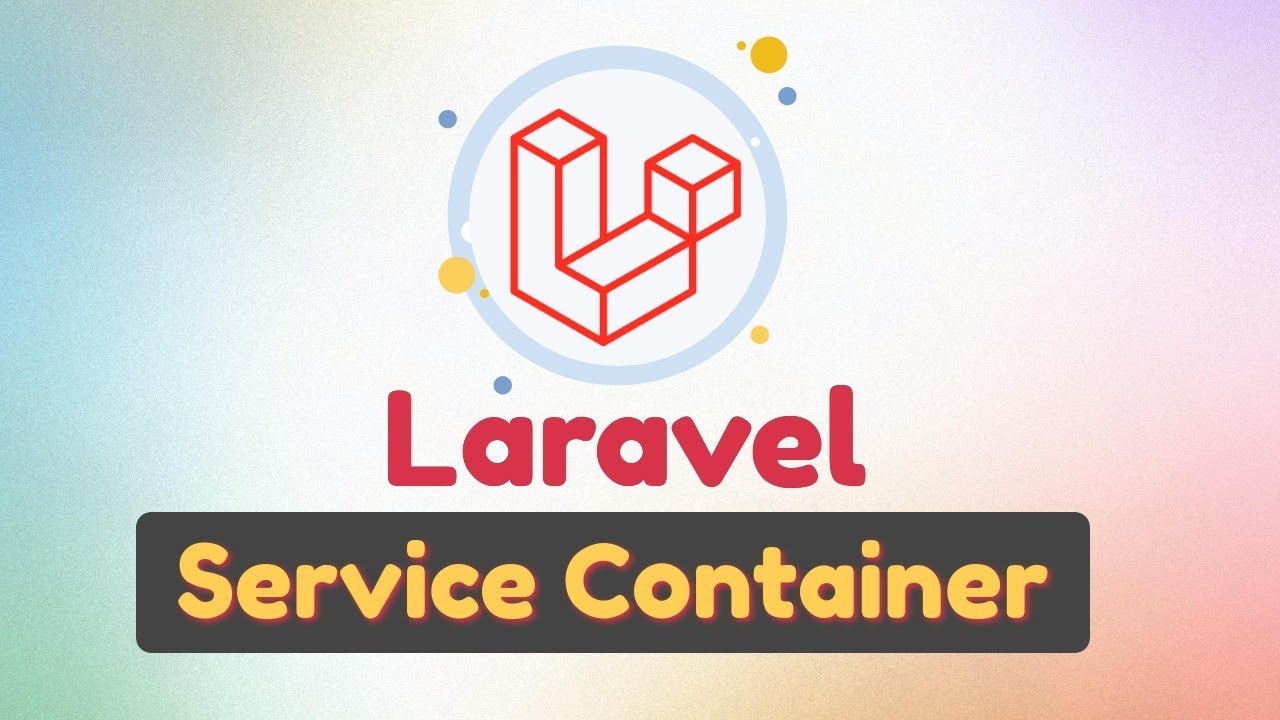Laravel Internal Magic Understanding Service Container and Facades
Laravel, a robust PHP framework, is renowned for its elegant syntax and powerful features. Among these, the Service Container and Facades stand out as fundamental components that streamline application development. This article explores how these features work under the hood, enhancing Laravel’s flexibility and efficiency in managing class dependencies and providing a static interface to classes.
The Foundation of Laravel’s Architecture
Laravel’s architecture is built on principles that prioritize flexibility, maintainability, and scalability, making it a standout choice for modern web development. At its core, the framework leverages the Service Container and Facades to provide a robust foundation for managing dependencies and simplifying complex interactions. The Service Container acts as the backbone of Laravel’s dependency injection system, enabling developers to bind and resolve classes effortlessly. This decoupling of dependencies ensures that applications remain modular and testable, adhering to the Inversion of Control principle.
Facades, on the other hand, offer a clean, expressive syntax for accessing services registered in the container. They act as static proxies to underlying classes, abstracting away the complexity of instantiation and dependency resolution. Together, these components form a cohesive architecture that promotes loose coupling and high cohesion, key tenets of maintainable software design.
The interplay between the Service Container and Facades allows Laravel to handle complex application logic with elegance. By abstracting away the intricacies of dependency management, developers can focus on building features rather than wrestling with boilerplate code. This architectural elegance is what makes Laravel a preferred framework for developers aiming to build efficient, scalable web applications.
Understanding the Service Container
The Service Container in Laravel is a powerful tool for managing class dependencies and performing dependency injection. At its core, it acts as a centralized registry where classes and their dependencies are stored, allowing Laravel to resolve and instantiate objects automatically. This eliminates the need for manual dependency management, making the codebase cleaner and more maintainable.
The primary purpose of the Service Container is to bind classes or interfaces to concrete implementations. This binding process ensures that when a class is requested, the container knows exactly how to instantiate it, including resolving any dependencies it may have. For example, you can bind an interface to a specific implementation using the bind method:
app()->bind(MyInterface::class, MyImplementation::class);
When you need an instance of MyInterface, the container will automatically provide MyImplementation. Resolving a class from the container is straightforward:
$instance = app()->make(MyInterface::class);
The container also supports singleton bindings, ensuring only one instance of a class is created and reused:
app()->singleton(MyClass::class, function () {
return new MyClass();
});
By managing dependencies in this way, the Service Container promotes loose coupling and enhances the modularity of Laravel applications, setting the stage for efficient dependency injection, as explored in the next chapter.
The Power of Dependency Injection
The Power of Dependency Injection: Delve into how Laravel’s Service Container facilitates dependency injection, making applications more modular and testable. Provide practical examples of dependency injection in action.
Laravel’s Service Container is the backbone of dependency injection (DI), a design pattern that promotes loose coupling and modularity in applications. By allowing dependencies to be injected rather than hardcoded, Laravel ensures that classes remain flexible and easier to test. The container acts as a centralized registry where dependencies are resolved automatically, eliminating the need for manual instantiation.
Consider a scenario where a PaymentService class depends on a PaymentGateway interface. Instead of creating the gateway within the service, Laravel injects it via the constructor. For example:
class PaymentService {
protected $gateway;
public function __construct(PaymentGateway $gateway) {
$this->gateway = $gateway;
}
}
When resolving PaymentService, the container automatically injects the appropriate implementation of PaymentGateway, as defined in the container bindings. This approach decouples the service from specific implementations, making it easier to swap out dependencies during testing or runtime.
Moreover, Laravel supports method injection, where dependencies are injected directly into controller methods. For instance:
public function processPayment(PaymentGateway $gateway) {
// Use $gateway to process payment
}
This flexibility enhances testability, as mock objects can be injected during unit tests. By leveraging the Service Container for dependency injection, Laravel empowers developers to build scalable, maintainable, and testable applications.
Facades Simplifying Complex Interfaces
Laravel Facades are one of the most elegant features of the framework, providing a static interface to classes stored in the service container. They act as a bridge between your application code and the underlying objects, allowing you to interact with complex services in a simple and expressive way. Instead of manually resolving dependencies or injecting services, Facades let you access them as if they were static methods, making your code cleaner and more readable.
Under the hood, Facades are not truly static. They leverage PHP’s magic methods, such as __callStatic, to dynamically resolve the underlying instance from the service container when a method is called. This means that while you write code like Cache::get(‘key’), Laravel is actually resolving the Cache class from the container and calling the get method on the resolved instance. This abstraction simplifies complex interactions, allowing developers to focus on logic rather than boilerplate code.
The benefits of using Facades are significant. They reduce the need for verbose dependency injection in every class, making your codebase more concise. Additionally, they improve readability by providing a clear and consistent API for interacting with services. However, it’s important to understand that Facades are not a replacement for dependency injection but rather a complementary tool that enhances developer productivity.
How Facades Work Behind the Scenes
Facades in Laravel are often referred to as “syntactic sugar” for accessing services in the service container, but their inner workings are far more intriguing. At their core, Facades leverage PHP’s magic methods, specifically __callStatic, to dynamically resolve and proxy static method calls to actual methods on resolved instances. When you call a static method on a Facade, such as Cache::get(‘key’), Laravel doesn’t actually execute a static method. Instead, it uses the __callStatic method to intercept the call and forward it to the underlying instance retrieved from the service container.
Behind the scenes, each Facade extends the base Illuminate\Support\Facades\Facade class, which defines the getFacadeAccessor method. This method returns a string key that identifies the binding in the service container. When a static method is invoked, the Facade uses this key to resolve the corresponding instance and then delegates the method call to it. This process ensures that Facades remain lightweight while providing a seamless interface to the container’s services.
The use of magic methods allows Facades to maintain a clean and intuitive API, abstracting away the complexity of dependency resolution. This design pattern not only enhances code readability but also ensures that developers can interact with services in a consistent and efficient manner.
Creating Custom Service Providers
Creating custom service providers in Laravel is a powerful way to organize and register bindings within the Service Container. Service providers act as the backbone of Laravel’s bootstrapping process, allowing you to define how classes should be resolved and instantiated. To create a custom service provider, use the php artisan make:provider command, which generates a new provider class in the app/Providers directory.
Within the provider, the register method is where you define your bindings. For example, you can bind an interface to a concrete implementation using the bind or singleton methods. The singleton method ensures that the same instance is reused throughout the application, while bind creates a new instance each time.
Best practices for developing efficient service providers include keeping the register method lightweight and deferring heavy logic to the boot method. Additionally, consider using deferred providers for bindings that are not immediately needed, improving application performance. Always namespace your providers logically and avoid overloading a single provider with too many bindings. By adhering to these practices, you ensure a clean, maintainable, and efficient service container configuration.
Extending Laravel with Service Container Bindings
Extending Laravel with Service Container Bindings allows developers to customize and enhance the framework’s core functionality. By leveraging the Service Container, you can replace or extend built-in services, or introduce entirely new ones. This flexibility is key to tailoring Laravel to your application’s specific needs.
To extend a core service, you can rebind it in the Service Container. For example, if you want to customize Laravel’s Mailer service, you can create a custom implementation and bind it in a service provider. Use the bind or singleton method to register your implementation, ensuring it adheres to the original contract. For instance:
$this->app->bind(Mailer::class, function ($app) {
return new CustomMailer($app['config']['mail']);
});
Adding new services is equally straightforward. Define your service class and register it in the container. For example, to add a custom PDF Generator service:
$this->app->singleton(PDFGenerator::class, function ($app) {
return new PDFGenerator($app['filesystem']);
});
You can also use contextual bindings to resolve dependencies dynamically based on the context. This is particularly useful when a class requires different implementations in different scenarios. By extending the Service Container, you unlock Laravel’s full potential, enabling seamless integration of custom logic while maintaining the framework’s elegance and structure.
Testing with Service Container and Facades
The Service Container and Facades in Laravel are not just tools for dependency injection and simplified access to services; they are also powerful allies in testing. By leveraging the Service Container, developers can easily mock or swap implementations during tests, ensuring that unit tests remain isolated and focused. For instance, when testing a class that depends on an external API, you can bind a mock implementation of the API client to the container. This allows you to simulate API responses without making actual HTTP requests, making tests faster and more reliable.
Facades, on the other hand, provide a convenient way to swap implementations during testing. Laravel’s Facade class includes a shouldReceive method, which allows you to mock facade calls. For example, if your application uses the Cache facade, you can mock its behavior to return specific values or throw exceptions, ensuring your tests cover all edge cases.
Additionally, the Service Container’s bind and instance methods enable you to replace real services with test doubles. This is particularly useful when testing complex dependencies or when you want to inject custom logic during tests. By combining these features, Laravel empowers developers to write robust, maintainable, and efficient tests, ensuring the reliability of their applications.
Common Pitfalls and Best Practices
When working with Laravel’s Service Container and Facades, developers often encounter pitfalls that can lead to performance bottlenecks or hard-to-maintain code. One common mistake is overusing Facades, which can make the codebase less testable and harder to debug. While Facades provide a convenient syntax, they can obscure dependencies, making it unclear which classes are actually being used. Instead, favor dependency injection wherever possible, as it promotes explicit dependencies and improves testability.
Another frequent issue is misconfiguring bindings in the Service Container. Binding the wrong implementation or failing to use contextual bindings can lead to unexpected behavior. Always ensure that bindings are scoped correctly, especially when dealing with singleton or instance bindings, to avoid memory leaks or unintended shared states.
Developers also sometimes overload the Service Container with unnecessary bindings, which can slow down the application. Only register what is truly needed and leverage deferred providers to optimize performance. Additionally, avoid resolving services directly from the container in controllers or models, as this tightly couples your code to the container itself.
To optimize performance, use caching for frequently resolved services and consider lazy loading for heavy dependencies. Finally, always document your bindings and Facade usage to ensure clarity for future maintainers. By adhering to these best practices, you can harness the full power of Laravel’s Service Container and Facades while maintaining a clean, efficient codebase.
Advanced Techniques and Real-world Applications
In large-scale applications, the Laravel Service Container and Facades shine as powerful tools for managing complexity and improving maintainability. One advanced technique is contextual binding, where the container resolves dependencies differently based on the context. For instance, a payment gateway interface might resolve to a specific implementation depending on the user’s region or subscription plan. This allows for dynamic, context-aware dependency injection without cluttering your code with conditional logic.
Another technique is deferred service providers, which delay the registration of bindings until they are actually needed. This is particularly useful in applications with many services, as it reduces the initial bootstrapping overhead. By deferring non-essential services, you can optimize performance and resource usage.
Facades, when used judiciously, can simplify interactions with complex subsystems. For example, in a real-world e-commerce platform, a custom facade for order processing can abstract away the intricacies of inventory management, payment processing, and shipping coordinat
ion. This not only makes the codebase more readable but also allows for easier testing and debugging.
In one case study, a SaaS platform reduced its API response times by 30% by leveraging the Service Container to cache frequently used services and using facades to streamline access to these cached instances. These advanced techniques, when applied thoughtfully, can significantly enhance the scalability and efficiency of large-scale Laravel applications.

Conclusions
Throughout this article, we’ve uncovered the intricacies of Laravel’s Service Container and Facades, demonstrating their pivotal role in application architecture. By mastering these components, developers can significantly enhance their application’s performance and maintainability. Embrace these tools to unlock the full potential of Laravel in your next project.



